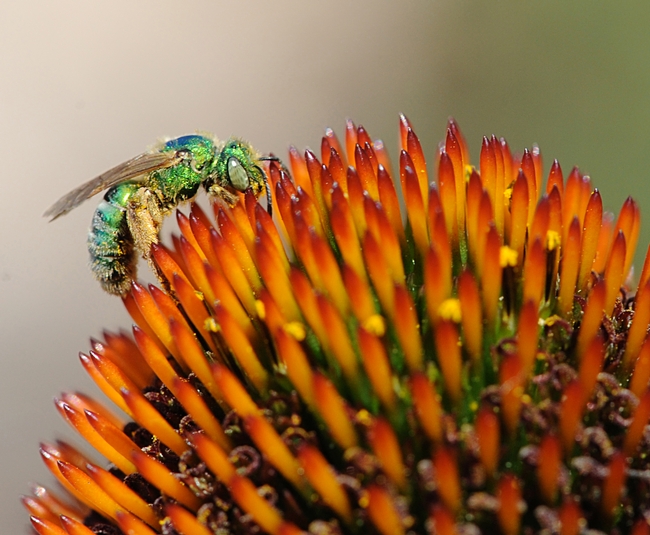If you're interested in native bees, you'll want to read the newly published University of California research article, "Tiny Saviors in Our Backyard."
Native pollinator specialists Robbin Thorp and Neal Williams of the UC Davis Department of Entomology are featured in the article as is conservation biologist Claire Kremen of UC Berkeley.
Author Erik Vance describes Thorp, emeritus professor of entomology, as "the patriarch of a rag-tag group of scientists who have pioneered research on non-honey bees that just may hold a solution to the world’s pollination problems."
Williams' work with conservation biologist Claire Kremen of UC Berkeley involves monitoirng which native bees are effective on Yolo County farms.
It's great to see so much attention on native bees.
As Vance says, "Honey bees get most of the buzz, but some native bees are better at spreading pollen. They may hold the solution to world pollination problems that affect important crops."
Honey bees are often considered "native" bees but they are not. English explorers brought them to America beginning in the 1620s.
The Xerces Society of Invertebrate Conservation, based in Portland, Ore. (and celebrating 40 years of conservation this year), is rightfully pleased with the UC scientists' work.
“The work out at the UC is some of the best work in the country right now,” Mace Vaughan, who oversees national pollinator work for Xerces, told Vance. “They are actually demonstrating the benefits.”
Attached Images:

Metallic green sweat bee (Agapostemon texanus) on coneflower. (Photo by Kathy Keatley Garvey)